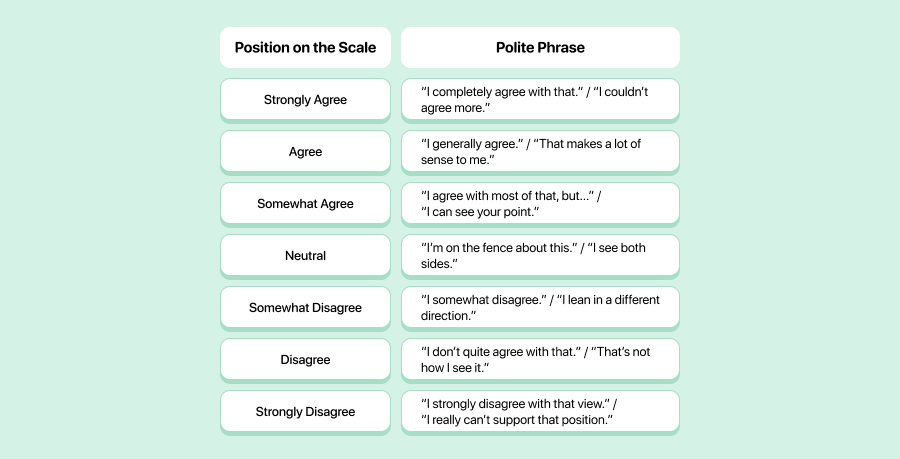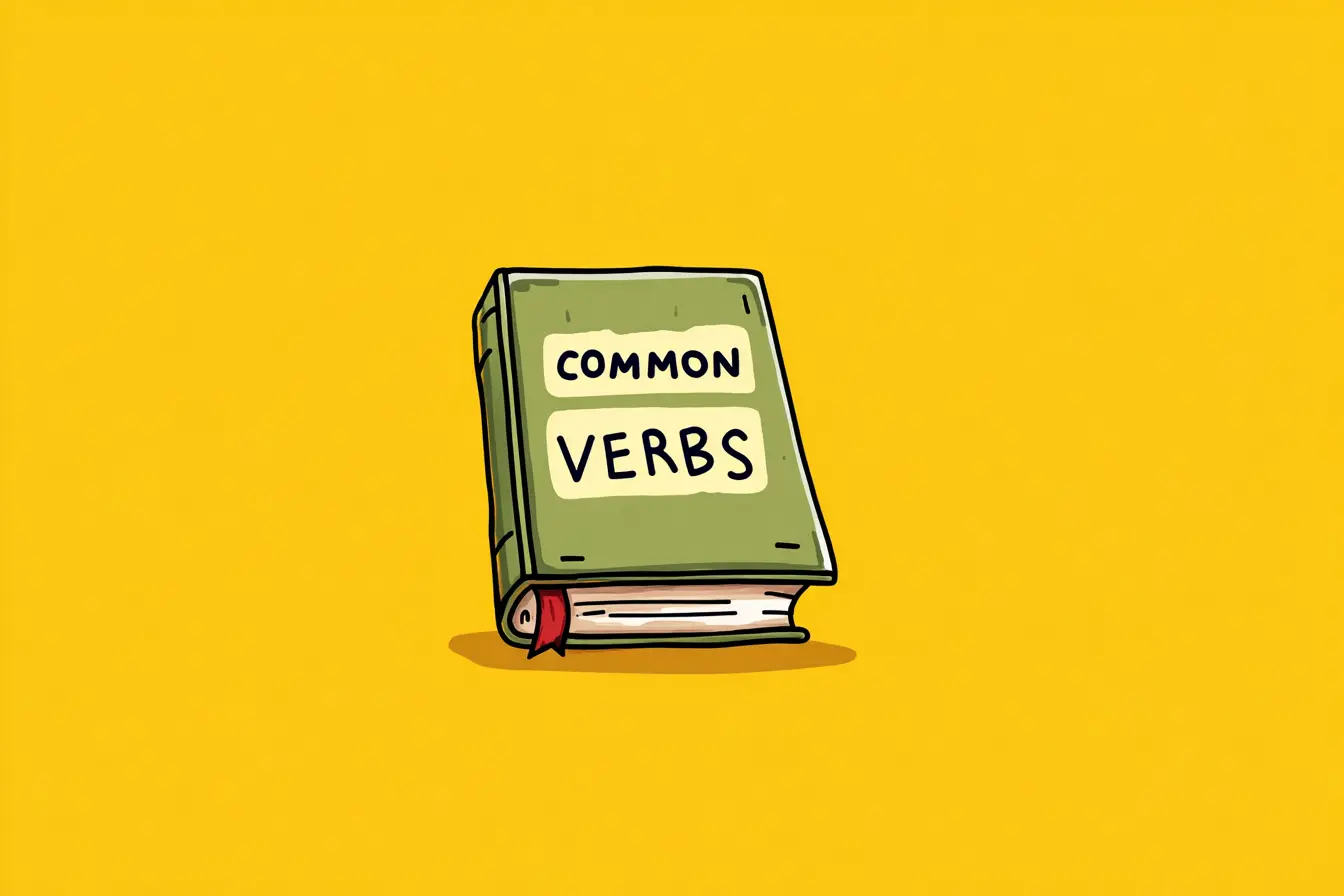Disagreements are inevitable, but they don’t have to be uncomfortable. Whether you’re in a meeting, texting a friend, or debating online, knowing how to disagree politely in English helps you express yourself clearly without offending anyone.
The goal? Say what you think, stay respectful, and keep the conversation alive. Let’s break it down.
Why Tone and Language Matter
You can say “I disagree” in a dozen different ways: some thoughtful, some confrontational. Tone is everything.
When you’re learning how to disagree respectfully, the trick is to focus on dialogue, not debate. You’re not trying to win, you’re trying to connect.
Here are a few tips to help you sound confident but kind:
- Start with “I think” or “In my experience” instead of “You’re wrong.”
- Avoid extremes like “always” or “never”, they sound aggressive.
- Ask for clarification instead of jumping to conclusions.
Politeness isn’t about being passive; it’s about being clear without being rude.
10 Ways to Disagree Respectfully (With Examples)
Want to push back on an idea without pushing someone away? Try these polite, proven phrases in everyday conversations:

Use them in your next discussion and you’ll sound polite, confident, and thoughtful, even if you strongly disagree.
From Strongly Agree to Strongly Disagree: Use the Scale
Sometimes you fully agree. Sometimes you absolutely don’t. But often, you land somewhere in the middle, and that’s where the strongly agree to strongly disagree scale comes in.
While it’s commonly seen in surveys and polls, it’s also a great way to express your opinion in conversation, especially when you want to sound thoughtful and diplomatic.
Here’s how you can use this scale in real-life conversations, emails, or discussions:

Using these softeners shows that you're open-minded—even when you're expressing an opposing opinion.
🗣 Example: “I somewhat disagree with that proposal. It has potential, but I see some risks we haven’t discussed yet.”
Bonus: Disagreeing Over Email or Text
Disagreeing in writing (especially at work) is a different ballgame. You can’t rely on tone of voice, facial expressions, or timing. That means every word matters.
Here’s how to do it professionally and politely:
📧 Sample Email Structure
Subject: Feedback on Q3 Strategy Proposal
Hi [Name],
Thanks so much for sharing the Q3 strategy outline. I really appreciate the effort and thought you put into it.
I had a few thoughts I wanted to share. While I agree with your approach to increasing ad spend, I’m a bit concerned about cutting support resources during the same period. Based on past data, that might affect retention rates.
Would you be open to revisiting that section together? I’d love to hear more about your thinking on it.
Best,
[Your Name]
Tips for Email Disagreement:
✅ Start positive – thank them for sharing, and show respect
✅ Use gentle language – “I’m a bit concerned,” “Would you be open to…,” etc.
✅ Be solution-oriented – don’t just disagree—offer an alternative or ask for clarification
✅ Invite collaboration – keep the tone as “us vs. the problem,” not “me vs. you”
Even in a short message, tone is everything. A little kindness goes a long way.
When It’s Time to Say “Let’s Agree to Disagree”
Sometimes, despite your best efforts, no one’s budging. You’ve both shared your perspectives, listened, and still don’t see eye to eye. That’s when it’s time for the graceful exit: agree to disagree.
What does agree to disagree mean?
The meaning of “Let’s agree to disagree” is the following: “Let’s stop trying to convince each other and just respect our different views.”
It’s not surrender, it’s maturity.
🗣 Example: “I totally understand where you’re coming from, but I still feel differently. Let’s agree to disagree and move forward.”
It’s calm. It’s respectful. And sometimes, it’s the only way to keep relationships and conversations intact.
Knowing how to disagree respectfully is a communication superpower. Choosing your words with care shows maturity, confidence, and emotional intelligence. The goal isn’t to win. It’s to be heard and to keep listening.
















